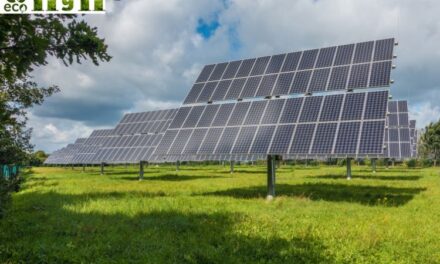Heating Solutions Rural homes in the UK often face unique challenges when it comes to heating. Many are off-grid, meaning they are not connected to the mains gas supply, and rely on alternative energy sources like oil, LPG, or electric heating. These options can be expensive and environmentally damaging. Fortunately, renewable heating solutions offer a sustainable and cost-effective alternative. This blog explores the top five renewable heating options tailored for off-grid rural households, helping you stay warm while reducing your carbon footprint.
1. Air Source Heat Pumps
Air source heat pumps (ASHPs) extract heat from the outside air and use it to warm your home. They work even in cold temperatures, making them a reliable option for rural properties.
Benefits
- Energy Efficiency: ASHPs can produce up to three times more heat than the electricity they consume.
- Lower Running Costs: They are cheaper to operate than oil or LPG heating systems.
- Eco-Friendly: ASHPs produce fewer carbon emissions compared to fossil fuel systems.
- Government Incentives: The Boiler Upgrade Scheme (BUS) offers grants of up to £7,500 for installing heat pumps.
Considerations
- Installation Costs: The upfront cost can be high, but grants and long-term savings offset this.
- Space Requirements: You’ll need outdoor space for the unit and a well-insulated home for optimal performance.
2. Biomass Boilers
Biomass boilers burn organic materials like wood pellets, chips, or logs to generate heat. They are an excellent option for rural homes with access to a sustainable supply of biomass fuel.
Benefits
- Renewable Fuel: Biomass is a carbon-neutral energy source when sourced sustainably.
- Cost-Effective: Wood pellets are often cheaper than oil or LPG.
- Government Support: The Renewable Heat Incentive (RHI) provides payments for heat generated by biomass systems.
Considerations
- Storage Space: You’ll need space to store the fuel, which can be bulky.
- Maintenance: Biomass boilers require regular cleaning and maintenance.
3. Ground Source Heat Pumps
Ground source heat pumps (GSHPs) extract heat from the ground using a network of buried pipes. They are highly efficient and ideal for rural homes with sufficient land.
Benefits
- High Efficiency: GSHPs are more efficient than air source heat pumps, especially in colder climates.
- Low Running Costs: They can significantly reduce heating bills over time.
- Eco-Friendly: GSHPs produce minimal carbon emissions.
- Government Grants: The BUS offers grants of up to £7,500 for GSHP installations.
Considerations
- Installation Costs: GSHPs are expensive to install due to the groundworks required.
- Land Requirements: You’ll need a large garden or land for the ground loop system.
4. Solar Thermal Systems
Solar thermal systems use solar panels to capture heat from the sun and use it to warm water, which can then be used for space heating or domestic hot water.
Benefits
- Renewable Energy: Solar thermal systems rely on free, abundant sunlight.
- Lower Energy Bills: They can reduce your reliance on traditional heating systems.
- Eco-Friendly: Solar thermal systems produce no carbon emissions during operation.
Considerations
- Weather Dependence: Performance can vary depending on sunlight availability.
- Space Requirements: You’ll need roof space for the solar panels.
5. Wood-Burning Stoves
Wood-burning stoves are a traditional and effective way to heat rural homes. Modern stoves are highly efficient and can be used as a primary or secondary heating source.
Benefits
- Cost-Effective: Wood is often cheaper than other fuels, especially if you have access to your own supply.
- Renewable Fuel: Wood is a carbon-neutral energy source when sourced sustainably.
- Aesthetic Appeal: Wood stoves add a cosy, rustic charm to your home.
Considerations
- Fuel Storage: You’ll need space to store wood, which can be bulky.
- Maintenance: Stoves require regular cleaning and maintenance.
Choosing the Right Renewable Heating Solution
When selecting a renewable heating system for your rural home, consider the following factors:
1. Energy Needs
Assess your home’s heating requirements, including the size of the property and the number of occupants.
2. Budget
Consider both the upfront installation costs and long-term running costs. Look for government grants and incentives to offset expenses.
3. Property Suitability
Evaluate your home’s location, land availability, and insulation levels to determine the most suitable system.
4. Fuel Availability
If you’re considering biomass or wood-burning stoves, ensure you have access to a sustainable fuel supply.
5. Environmental Impact
Choose a system that aligns with your sustainability goals and reduces your carbon footprint.
Conclusion
Renewable heating solutions offer a sustainable and cost-effective way to keep rural homes warm while reducing reliance on fossil fuels. Whether you opt for an air source heat pump, biomass boiler, ground source heat pump, solar thermal system, or wood-burning stove, each option has its unique benefits and considerations.
For off-grid households in the UK, these renewable heating systems provide an opportunity to embrace energy independence, lower heating costs, and contribute to a greener future. By carefully evaluating your needs and exploring government incentives, you can find the perfect heating solution for your rural home.
By transitioning to renewable heating, you’ll not only stay warm but also make your home more sustainable and environmentally friendly. Take the first step towards a cleaner, greener future today!
https://econgn.com/5-habits-to-lower-your-energy-bills-today/





